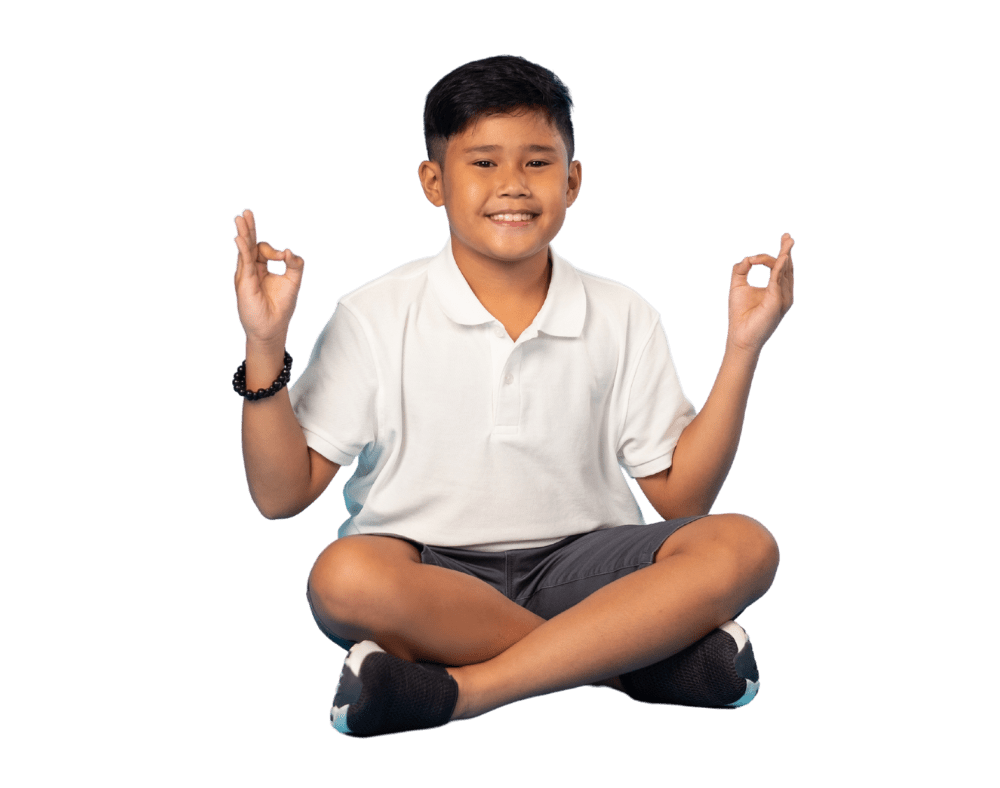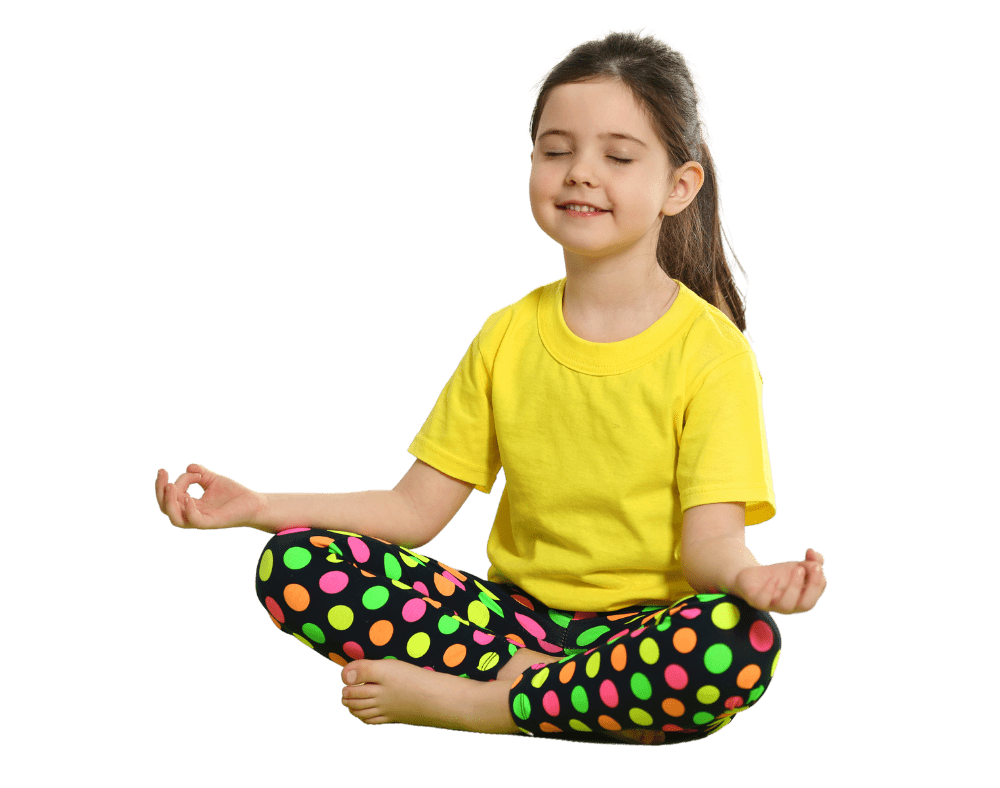At the end of each of my kids’ Yoga classes I say, “May the world be filled with love and light and lots of peaceful children.” But in today’s chaotic world, how do we help children experience peacefulness? How do we help kids live and internalize the lessons and feelings they experience in a Yoga class? I use the Yoga Octopus!
Like an octopus, the practice of Yoga has eight limbs. Sometimes we call these limbs paths, or collectively “the eight-fold path.” The origin of this path is The Yoga Sutras of Patanjali. You are probably familiar with one of these limbs of Yoga, the physical postures or Asana. But, when I teach Yoga to children, I teach them more than the postures of Yoga. Every class includes other parts of and lessons from the eight limbs of Yoga.
My Yoga Octopus I share in my classes has eight arms. Attached to each arm is a word or phrase representing each of the components of the eight limbed path. These components are:
YAMAS: Universal Morality
NIYAMAS: Personal Observances
ASANAS: Body Postures
PRANAYAMA: Breath Control
PRATYAHARA: Control of the Senses
DHARANA: Concentration and Inner Awareness
DHYANA: Devotion and Meditation
SAMADHI: Union (with the Divine)
The first two limbs are the ethical outline of the practice of Yoga. They are suggestions and guidelines of how we should deal with ourselves and the people around us. The Yamas are the attitudes we have toward the people and things outside ourselves, while the Niyamas are the ways in which we relate to our inner selves. The Yamas and Niyamas define our fundamental nature as compassionate, generous, honest and peaceful beings.
This brings us to the third limb, the most well known limb, and the path of Yoga most 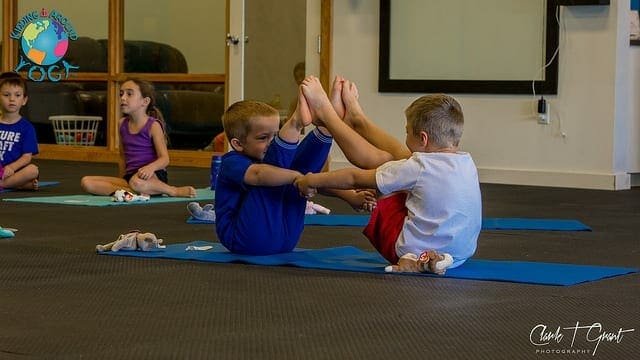 commonly practiced in the western world-Asana. The physical postures practiced in Yoga were created to move the body until it becomes ready for stillness. And in that stillness, our minds will be able to settle down, too. To that end, in kids’ Yoga classes, there is a lot of movement – jumping, rolling, spinning, and balancing are all used to get the children ready to relax at the end of class.
commonly practiced in the western world-Asana. The physical postures practiced in Yoga were created to move the body until it becomes ready for stillness. And in that stillness, our minds will be able to settle down, too. To that end, in kids’ Yoga classes, there is a lot of movement – jumping, rolling, spinning, and balancing are all used to get the children ready to relax at the end of class.
Prana is life and so Pranayama (the 4th limb) is life breath or life’s energy. Breath and air can be a hard thing for kids to understand when they can’t see it. So help them understand by making it both visual and tactile. One fun activity to help kids understand the power of pranayama is to have breath-controlled ping-pong ball races. Lay out two long parallel lines of tape about five or six feet apart. Give each child a ping pong ball and a different color magic marker. Have them decorate their ball however they wish.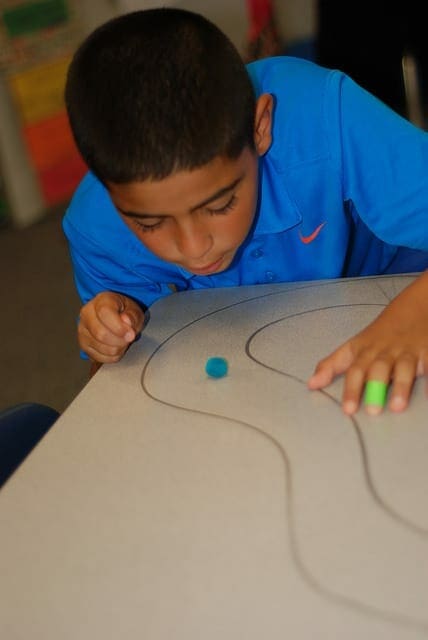 Then have the kids lie down on their tummies along one of the lines facing the other line. Be sure there is enough room between each kid so that they aren’t blowing on their neighbor’s ball! Each child should place his ball just in front of his mouth. and nose and then clasp or interlace his fingers behind his back-no hands allowed! Now the game begins! Each child must control his breath to move his ball across the ‘finish line’. In playing tis game, kids can see their pranayama and experience the direct result of different strengths of breath. TIP: To make this game harder, use cotton balls or different color pompoms instead of ping-pong balls and make the lines farther apart.
Then have the kids lie down on their tummies along one of the lines facing the other line. Be sure there is enough room between each kid so that they aren’t blowing on their neighbor’s ball! Each child should place his ball just in front of his mouth. and nose and then clasp or interlace his fingers behind his back-no hands allowed! Now the game begins! Each child must control his breath to move his ball across the ‘finish line’. In playing tis game, kids can see their pranayama and experience the direct result of different strengths of breath. TIP: To make this game harder, use cotton balls or different color pompoms instead of ping-pong balls and make the lines farther apart.
Teaching Pratyahara, control over the senses, to kids can be hugely beneficial in their social-emotional development. The word pratya means drawing back while ahara alone means nourishment. So think of pratyahara as the drawing back from that which nourishes-the senses of the body. Kids growing up today are bombarded with so many stimuli that they can easily become overwhelmed, exhausted and overstimulated. Before we can actually teach kids to control their senses, they need to understand what it is to do so. Start by having kids identify their five senses: sight, hearing, taste, touch, and smell. Then have them talk, draw, or write about the sense they use the most and how they use it. Have them try one everyday activity without this sense. If you are teaching pratyahara in the context of a movement or yoga class, have the kids try the same pose or movement without each of their five senses. How was the pose or movement effected?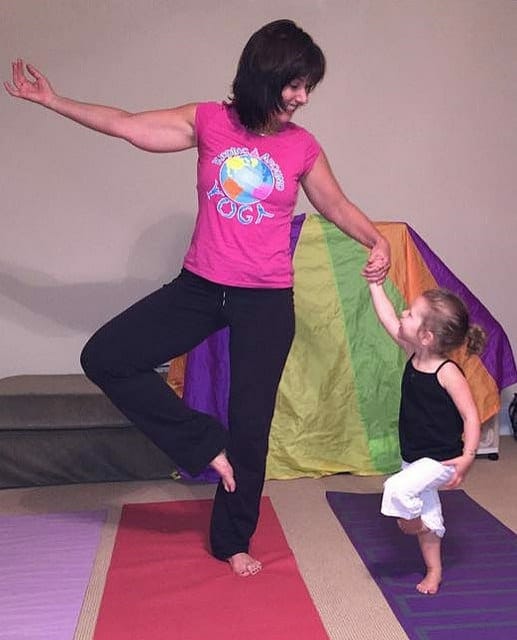
As kids grow and mature, so does their sense of inner awareness-their knowledge about themselves. Dharana is the process of coming to that self awareness, discovering new things as we grow. Whether its in the classroom, at home, at the grocery store, or on the Yoga mat, kids and adults alike have a plethora of opportunities to increase their dharana through mindfulness and observation. Spend some time with a child just noticing and observing. Ask him questions about what he sees, hears, feels, tastes and smells. Ask about the physical and the emotional, likes and dislikes. Explore the reasons he holds those likes and dislikes without trying to change his opinion. Hear and acknowledge his observations about himself rather than validating them. The other part of dharana is concentration; focus on the task at hand, the present moment, the role of the self in the current experience. Craft activities can be a great way to build focus while at the same time helping to develop a child’s fine motor skills and self-expression. The completion of a craft project requires a child to focus on what he is doing rather than what is going on around him. He is able to experience being in his own body, in the present moment.
As a child becomes more self-aware and able to concentrate, she also grows toward meditation and devotion, or Dhayana. The goal of meditation is not thinking about nothing at all, it is to make the thoughts conscious. Meditation is something that becomes much easier with practice and kids catch on quickly! Meditation can be as simple as picking something to think about. With kids, I often encourage them to think 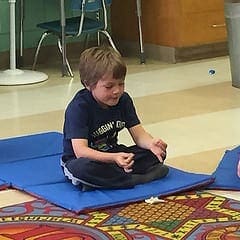 about their happiness place. The place where they want to be more than anywhere else in the whole world. I ask them to think about that place and only that place. Not just the name of it, but it’s sights, sounds, smells, and textures. I encourage them to let these pieces of this favorite place fill their mind until there is no room for anything else. There is no room for worry or sadness, only happiness associated with their favorite place. Once kids experience the state of peace that comes with meditation, they want to experience it again and again for longer stretches of time. Maybe their first mental visit to their favorite place lasts just two minutes. Eventually it might last ten! The first time they visit their favorite place in their mind, you may need to ask lots of questions about the place to guide them there. As they visit again and again, slowly fade out the questions until they can reach their favorite place just by being prompted to go there. That’s dhayana.
about their happiness place. The place where they want to be more than anywhere else in the whole world. I ask them to think about that place and only that place. Not just the name of it, but it’s sights, sounds, smells, and textures. I encourage them to let these pieces of this favorite place fill their mind until there is no room for anything else. There is no room for worry or sadness, only happiness associated with their favorite place. Once kids experience the state of peace that comes with meditation, they want to experience it again and again for longer stretches of time. Maybe their first mental visit to their favorite place lasts just two minutes. Eventually it might last ten! The first time they visit their favorite place in their mind, you may need to ask lots of questions about the place to guide them there. As they visit again and again, slowly fade out the questions until they can reach their favorite place just by being prompted to go there. That’s dhayana.
All of this growth, self-awareness, mental work, and physical practice help us travel on a journey. That journey moves us ever closer to one state – the ultimate – the eighth limb of Yoga – Samadhi or union. All of Yoga brings kids (and adults) closer to this experience of oneness where we recognize ourselves in others, and in the divine. Here’s where the waters can get muddy. ‘Union with the divine’ is where some people find the misconception of Yoga being linked to a religious or spiritual practice. This misconception leads many kids’ Yoga teachers to call their classes things like 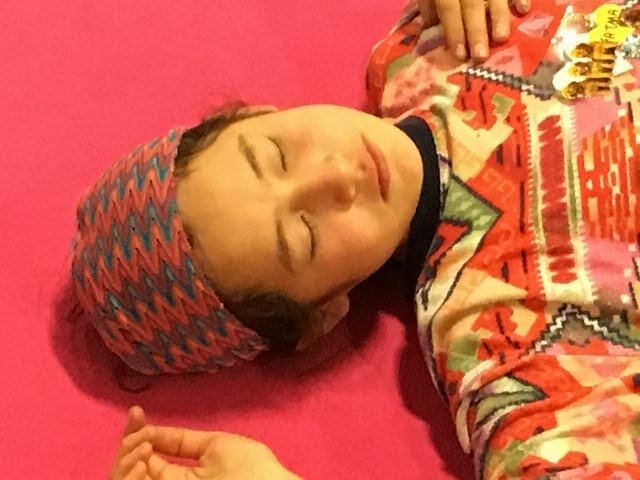 “movement and breath learning”. The word “divine” has been linked to words like ‘God’ for centuries. We as Yoga teachers aren’t going to change that. What we can do is work to demystify the yogic context of divine. In my kids’ Yoga classes, ‘divine’ is a feeling. “I feel divine.” Meaning “I feel peaceful. I feel happy. I feel euphoric.” To unite with the divine then is to become one with the feelings of happiness and peace. That is not that we experience only happiness, but that we allow these feelings to fill us completely when we do experience them. To let these feelings take over the moment in which we experience them. Kids are great at this! They scream, cry, and laugh in sheer delight. Encourage it!! This is an expression of living in unity with the divine. A child who is grinning from ear to ear is experiencing her moment of Samadhi.
“movement and breath learning”. The word “divine” has been linked to words like ‘God’ for centuries. We as Yoga teachers aren’t going to change that. What we can do is work to demystify the yogic context of divine. In my kids’ Yoga classes, ‘divine’ is a feeling. “I feel divine.” Meaning “I feel peaceful. I feel happy. I feel euphoric.” To unite with the divine then is to become one with the feelings of happiness and peace. That is not that we experience only happiness, but that we allow these feelings to fill us completely when we do experience them. To let these feelings take over the moment in which we experience them. Kids are great at this! They scream, cry, and laugh in sheer delight. Encourage it!! This is an expression of living in unity with the divine. A child who is grinning from ear to ear is experiencing her moment of Samadhi.
Want to do an entire unit on the Yoga Octopus? Just devote a couple of classes to each limb of the eight-fold path. Find and print coloring pages featuring an octopus. Label each of the octopus’ legs with one of the paths and have color in part of the leg representing the path they worked on that day in class. At the end of the unit, they have a great visual take-home to remind them there are many parts that make up one yoga, one peaceful union, one world made up of peaceful children.

